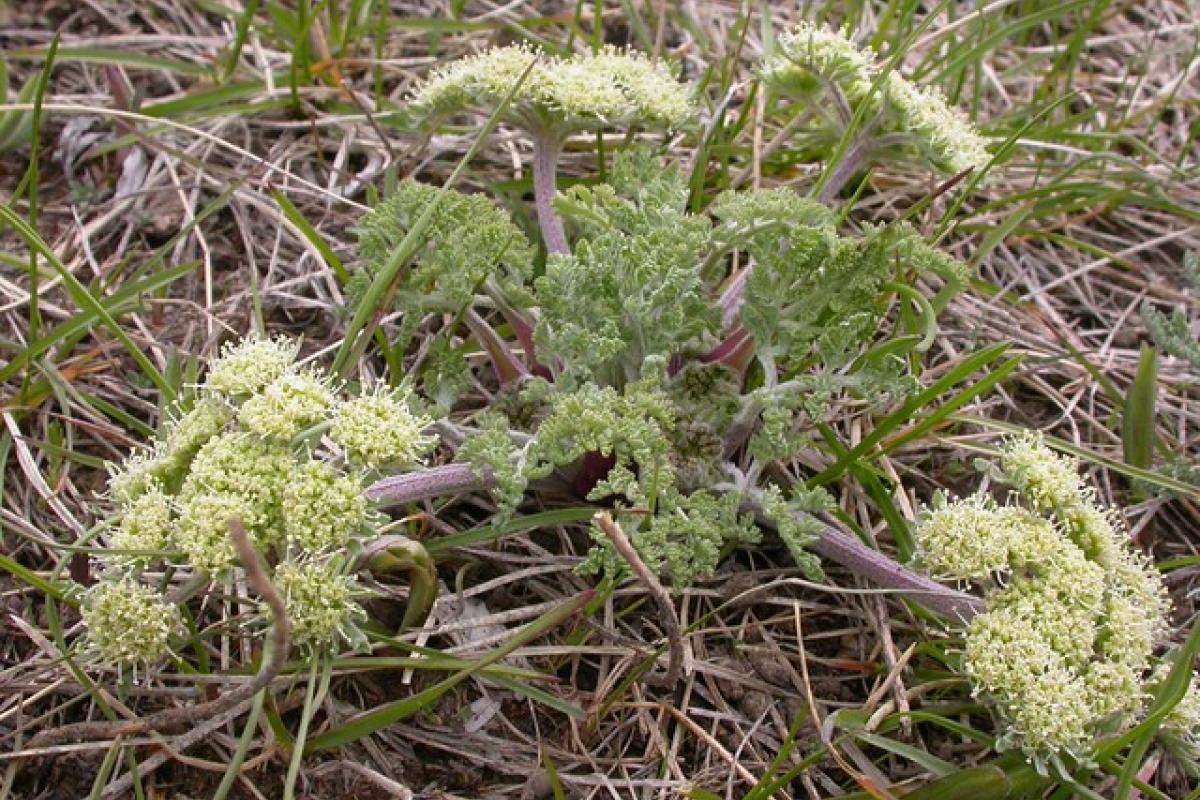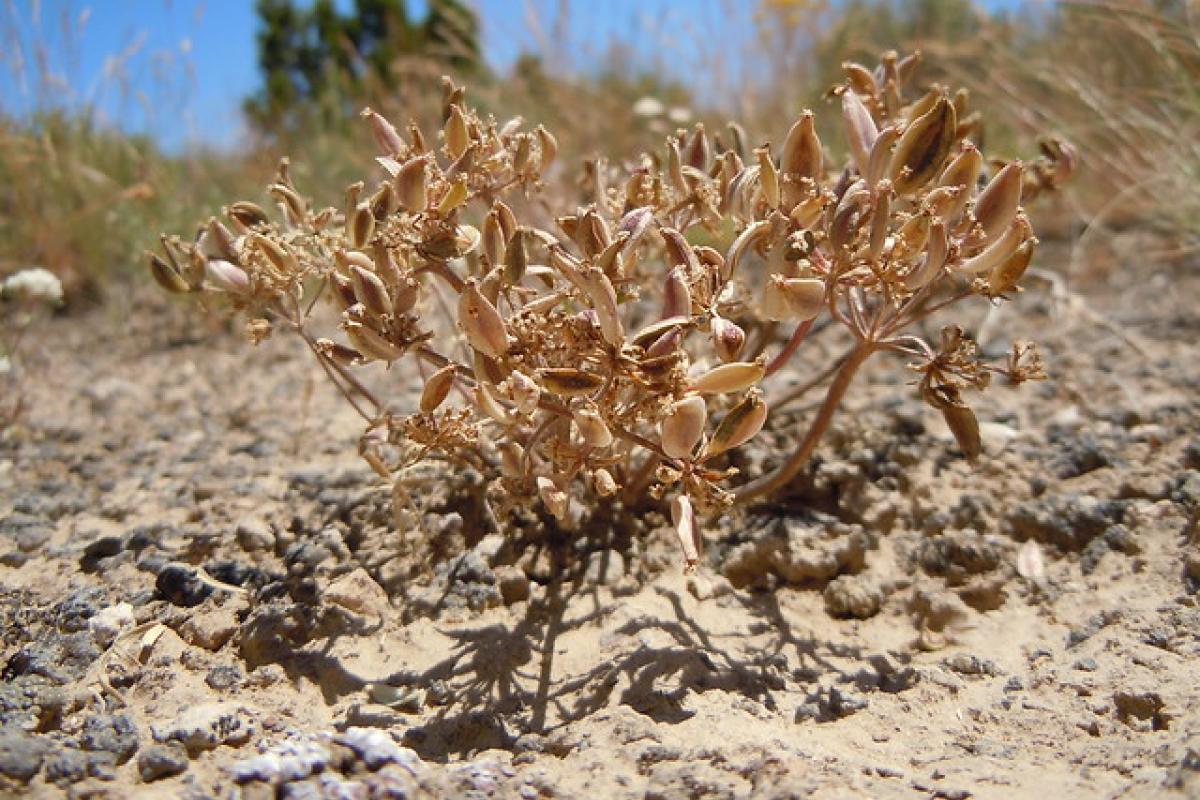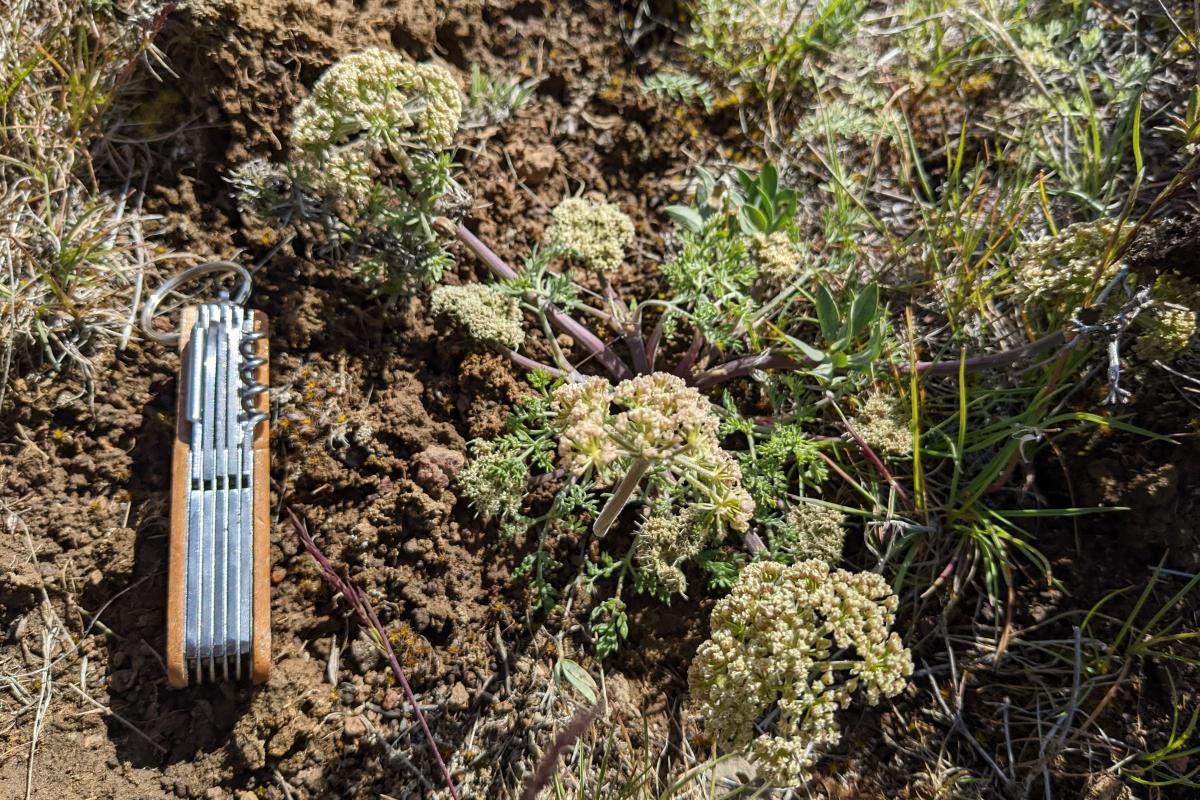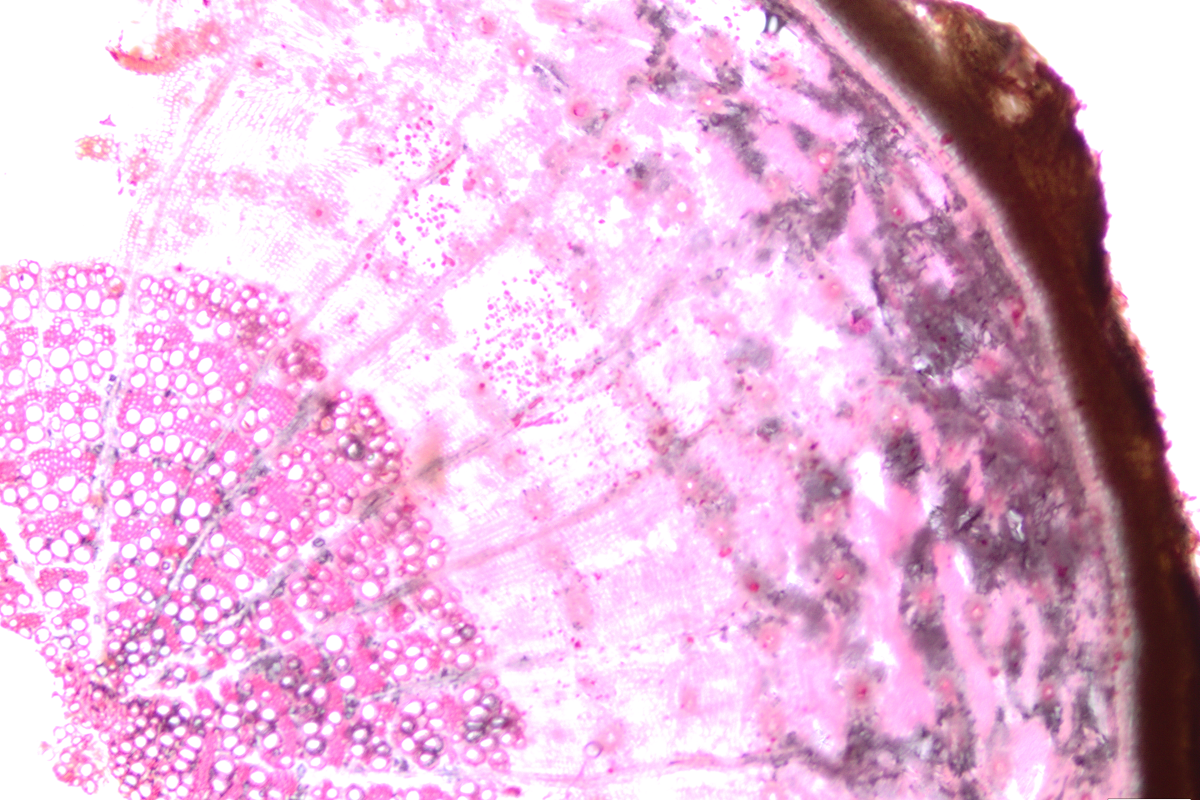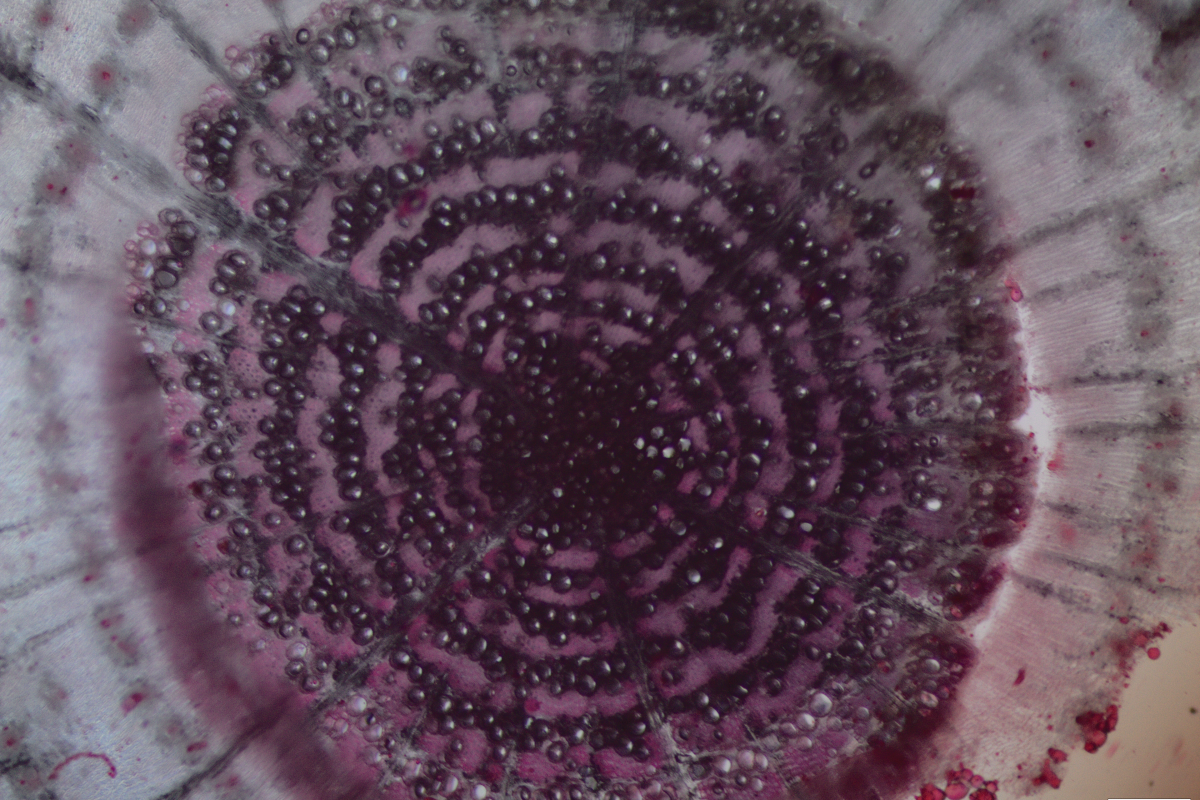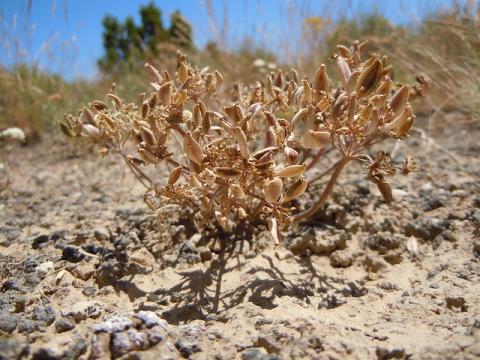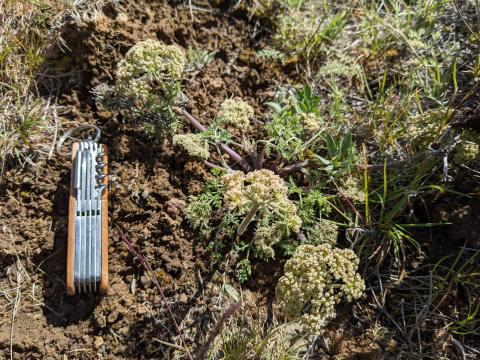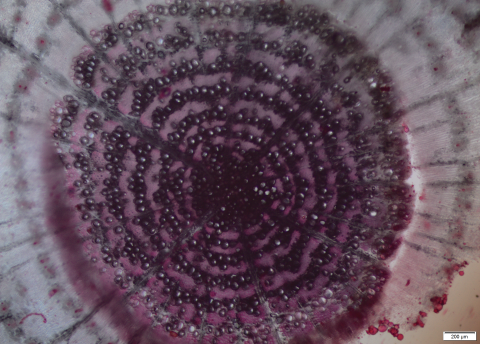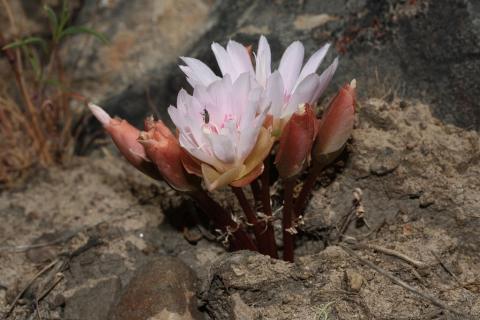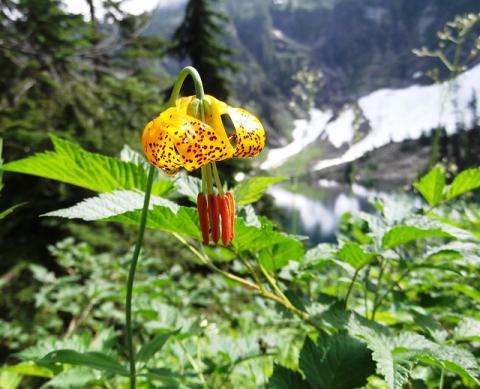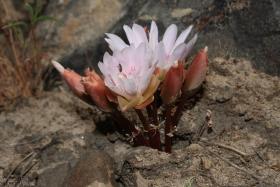Lomatium macrocarpum
Lomatium macrocarpum (Nutt. Ex Torr. & A. Gray) J.M. Coult & Rose is a low-growing plant with a fleshy, long taproot and small white flowers which form irregular umbrella-like clusters. Leaves are clustered near the ground, finely dissected, and blue-green or gray.
This lomatium exhibits the greatest variety in root morphology; roots may be deep and straight or have a subsurface thickening. These thickenings range from globular to spindle shaped, and there may be more than one tuberous thickening on each root.
The "carrot-like" roots were harvested in spring at about the same time as the Bitterroot harvest. Only the non-flowering plants were harvested as it was said that the "male" plants were too bitter (Turner 2007:85). The roots could be eaten raw, but most people boiled or roasted them, and often with other foods. They are said to be strong-tasting and peppery. According to Turner (2007:85), the Nlaka'pamux people cooked them with meat or with Tiger Lily bulbs and fermented salmon roe, while some Secwepemc people sprinkled them on dried salmon. These roots may also be cooked with lichen (Bryoria spp.).
Open rocky hills and plains, often with sagebrush.

